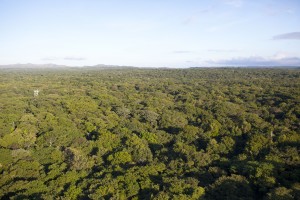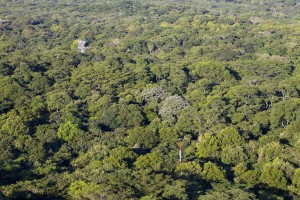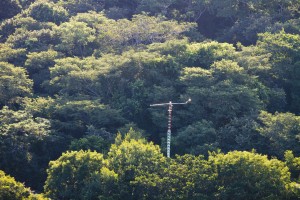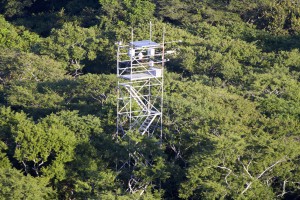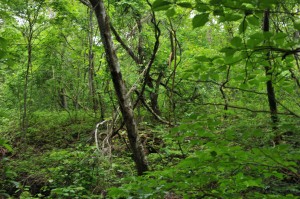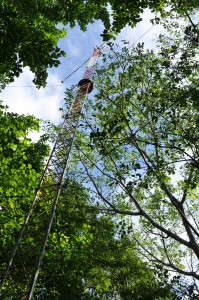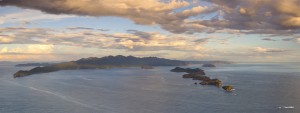Tropi-Dry: Enhancing knowledge exchange for conservation and management of tropical dry forests in the Americas (CRN 3025)

Project information
University of Alberta (Canadá)
Results Outreach Investigators Students Executive summary Photos
Results
This is a summary of the most salient project results. For further information see the project website, project papers or contact the investigators directly.
This project conducts a knowledge synthesis on ecosystem services in tropical dry forest (TDF), using literature and data from previous CRN 2021 and SGP-CRA 2021 projects, models of land use and cover change, and provides knowledge exchange with stakeholders in Costa Rica and Brazil.
Of 531 articles on ecosystem services (1970 to 2015), 47% are related to biodiversity, 26% to carbon, 16% to soils, and only 11 % to water. Studies of biodiversity and carbon focused specifically on provisioning services, studies of water focused on regulating services, and studies of soil focused on supporting services. Information is being integrated using the Dinamica EGO land use change and environmental modeling platform.
Working with IBM analytics to integrate C and water fluxes for the Santa Rosa National Park provided drought prediction tools for Guanacaste, Costa Rica. New wireless sensor networks now monitor cash crops of coffee and sugar cane showing that 80% of the 11,000 coffee farms in Guanacaste were under stress from climate change and the 2014-15 drought.
The wireless sensor network recording intra- and inter-annual variation in forest productivity showed that dry forests recovering from disturbance quickly reestablish their climatic buffer capacity, an important ecosystem service. The canopy-understory climate moderation is related to forest structure and soil properties in addition to light interception. This is important for grazing uses. Forest recovery was aided by remaining fragments of mature and old growth forest in disturbed biomes.
Remote sensing detected intensifying, persistent and new deforestation hotspots on the Southern Pacific coast and Yucatan Peninsula in Mexico, Northwestern Guatemala, in Honduras and around Lake Nicaragua. TDF are already endangered due to a long history of human disturbances but management will become an even greater challenge as drought severity and frequency increase.
These sites are under the political jurisdiction of local environmental authorities. The team provided information that it is more effective to locate parks and sites for ecosystem service payments distant from each other. High levels of enforcement in parks and lands with payments, and the presence of conservation spillovers that reduce deforestation near parks, significantly reduce the potential impact of combining these two policies.
The largest irrigated perimeter in Latin America, with 100,000 ha is being established in Minas Gerais for large multinational fruit producers. For this, the development banks required compensation through the creation of 5 Conservation Units from which traditional communities were expelled in a land-sparing strategy: the segregation of land for intensive agricultural production and land for untouched nature.
However, traditional communities aim at an opposite land-sharing: environmental-friendly farming with low-intensity production and conservation on the same land. The team mapped the territories of these traditional communities so that they can be expropriated inside farms and CUs, and provided technical information to the Environmental Attorney to transform 5,000 ha of the 25,000 ha CU into a sustainable use regime.
Data generated by this project have been made available under Azofeifa on http://datadryad.org
As a result of the involvement in the program, Dr. Sanchez-Azofeifa was appointed lead author of the Intergovernmental Platform on Biodiversity and Ecosystem Services, and will be in charge of producing the Americas chapter for the forthcoming IPBES assessment.
Project outreach
The relationship between people and natural resources in the Caatinga, and biodiversity and preservation, were the subjects of a Workshop that was held at the Univasf campus at Senhor do Bonfim, Bahia.
Ranching is an important part of agricultural production in South America. Although there are more than 40 million hectares of degraded pastures in the region, silvo-pastoral systems can sustainably maintain both an economic activity, and near intact ecosystems and their services. We here present examples from the Argentine Chaco and the dry forests of Minas Gerais, Brazil. This movie is based on the results of the research of this project and climate, water and land-use decisions in the plains of Southern South America (SGP-CRA 2031)
Interview with Arturo Sanchez Azofeifa on tropical dry forest responses to climate change and likely future changes. RTCC – UNFCCC CoP20, Lima, Peru, December 2014
IAI-Environet is a practical solution to climate change challenges. Climate change affects the resilience of dry forest ecosystems. To work towards comprehensive climate change adaptation policies in arid and semi-arid regions of the Americas we need to monitor and understand interactions between forests and their environment. Arturo Sanchez-Azofeifa (IAI) presents an advanced wireless sensor and analytics system designed to collect and analyze environmental data. The Enviro-Net system is already active in several countries and will be installed in Peru in 2015. November 2014.
 Analyzing real-time sensor data to understand climate and environmental change. February 2015.
Analyzing real-time sensor data to understand climate and environmental change. February 2015. With analytic reach, Canadian scientists monitor the world’s climate change. 27 January 2015, Insights magazine.
With analytic reach, Canadian scientists monitor the world’s climate change. 27 January 2015, Insights magazine.2013, June. UNFCCC, Research Dialogue 5, SBSTA 38, Bonn. A. Sanchez-Alzofeifa, Carbon fluxes in tropical dry forests and savannas: Human, ecological and biophysical dimensions
Project investigators
Arturo Sánchez-Azofeifa (gasanche@ualberta.ca)
University of Alberta (Canada)
Julio Calvo-Alvarado (jucalvo@itcr.ac.cr)
Instituto Tecnológico de Costa Rica, Costa Rica
Mário Marcos do Espírito Santo (marioesanto@gmail.com)
Universidade Estadual de Montes Claros, Brazil
Carlos Portillo-Quintero
Texas Tech University, USA
Juan Andres Robalino
Centro Agronómico de Investigación y Enseñanza (CATIE), Costa Rica
Adrian Rodriguez
Economic Commission for Latin America and the Caribbean (ECLAC), Chile
Students
Adrian Araya, Undergraduate, Instituto Tecnológico de Costa Rica, Costa Rica
Alline Mendes Alves, Master, Universidade Estadual de Montes Claros, Brazil
Amanda Elisa Marega, Undergraduate, Universidade Federal do Rio de Janeiro, Brazil
Ana Carolina Lima Finoti, Undergraduate, Universidade Federal Rural do Rio de Janeiro, Brazil
Ana Cecilia Pancotti, Undergraduate, Universidade Federal do Rio de Janeiro, Brazil
Ana Julieta Calvo Obando, Master, Instituto Tecnológico de Costa Rica, Costa Rica
André Rocha, Master, Universidade Estadual de Montes Claros, Brazil
Andrea Tapia Arenas, Undergraduate, Instituto Tecnológico de Costa Rica, Costa Rica
Andrés Calderín Garcia, PHD, Universidade Federal Rural do Rio de Janeiro, Brazil
Brad Danielson, Post Doctorate, University of Alberta, Canada
Branko Hilje, PHD, University of Alberta, Costa Rica
Camila Pinheiro Nobre, PHD, Universidade Federal Rural do Rio de Janeiro, Brazil
Cao Sen, PHD, University of Alberta, China
Cassidy Rankine, PHD, University of Alberta, Canada
Catalina Sandoval, Master, Universidad de Costa Rica, Costa Rica
Crystine Skinner, Undergraduate, University of Alberta, Canada
David Sanchez, Undergraduate, Instituto Tecnológico de Costa Rica, Costa Rica
Diego Roman, Master, CATIE, Costa Rica
Domina Harrison, Undergraduate, University of Alberta, Canada
Elena Garcia, Undergraduate, Universidad Politecnica de Valencia, Spain
Elizabeth Jimenez, Undergraduate, Instituto Tecnológico de Costa Rica, Costa Rica
Eric Ribeiro Madureira, Master, Universidade Estadual de Montes Claros, Brazil
Erick Naranjo Esquivel, Undergraduate, Instituto Tecnológico de Costa Rica, Costa Rica
Ezequiel Fallas, Undergraduate, Instituto Tecnológico de Costa Rica, Costa Rica
Flávio M. Mota, Undergraduate, Universidade Estadual de Montes Claros, Brazil
Francy Gonçalves, PHD, Universidade Federal Rural do Rio de Janeiro, Brazil
Frederico Almeida Macedo, Undergraduate, Universidade Estadual de Montes Claros, Brazil
Graciane Siqueira Correa, Undergraduate, Universidade Estadual do Rio de Janeiro, Brazil
Helen Botelho Marota, Master, Universidade Federal Rural do Rio de Janeiro, Brazil
Helen Rosa, Master, Universidade Estadual de Montes Claros, Brazil
Jing Chen, PHD, University of Alberta
Joselandio Correa Santos, Undergraduate, Universidade Estadual de Montes Claros, Brazil.
Kayla Stan, Master, University of Alberta, Canada.
Kênia Mendes Dias, Master, Universidade Federal Rural do Rio de Janeiro, Brazil.
Kléber de Oliveira Fernandes, Master, Universidade Estadual de Montes Claros, Brazil.
Laura Giovanna Oliveira Lopes, Master, Universidade Estadual de Montes Claros, Brazil.
Lidong Zhu, PHD, University of Alberta, China.
Lucas Figueiredo, Undergraduate, Universidade Estadual de Montes Claros, Brazil.
Luiz Gilberto Ambrósio de Souza, Master, Universidade Federal Rural do Rio de Janeiro, Brazil.
Marco Túlio Santos Vieira, Undergraduate, Universidade Estadual de Montes Claros, Brazil.
Maria Betânia Fonseca, Master, Universidade Estadual de Montes Claros, Brazil.
Maria Fernanda Gonçalves Durães, Undergraduate, Universidade Estadual de Montes Claros, Brazil.
Mariajose Esquivel, Undergraduate, Instituto Tecnológico de Costa Rica, Costa Rica.
Mariana Guimarães Dupin, Undergraduate, Universidade Estadual de Montes Claros, Brazil.
Mariana Vargas Coto, Undergraduate, Instituto Tecnológico de Costa Rica, Costa Rica.
Maryangel Gonzalez, Undergraduate, Instituto Tecnológico de Costa Rica, Costa Rica.
Mike Hesketh, PHD, University of Alberta, Canada.
Norberto Ramirez, Undergraduate, Instituto Tecnológico de Costa Rica, Costa Rica.
Ozorino Neto, Master, Universidade Estadual de Montes Claros, Brazil.
Pablo Ruiz Gimenez, Undergraduate, Universidad Politecnica de Valencia, Spain.
Patrick Fonseca, Undergraduate, Universidade Estadual de Montes Claros, Brazil.
Paulo Augusto Binder D’Angelis, Master, Universidade Estadual de Montes Claros, Brazil.
Riard Porto, Undergraduate, Universidade Estadual de Montes Claros, Brazil.
Sael Sánchez Eliaz, PHD, Universidade Federal Rural do Rio de Janeiro, Brazil.
Sandra Duran, PHD, University of Alberta, Colombia.
Sarah Freitas Magalhães Silva, Master, Universidade Estadual de Montes Claros, Brazil.
Saulo Castro Contreras, PHD, University of Alberta, Mexico.
Shawna Stack, Undergraduate, University of Alberta, Canada
Sofia Calvo Rodriguez, Master, University of Alberta, Costa Rica.
Thiago Gonçalves Silva, Master, Universidade Estadual de Montes Claros, Brazil.
Vaughn Smith, Undergraduate, Texas Tech University, USA.
Virginia Garcia Millan, Post Doctorate, Spain.
Wei Li, PHD, University of Alberta, China.
Wendy Alvarado, Undergraduate, Instituto Tecnológico de Costa Rica, Costa Rica.
Wesley Silveira Marcelo Soares, Undergraduate, Universidade Estadual de Montes Claros, Brazil.
Zhujun Gu, Post Doctorate, University of Alberta, China
Executive summary
Tropical Dry Forests (TDFs) are considered one of the most threatened forest ecosystems in the world as a consequence of intensive anthropogenic disturbance. Their fertile soils and mild climates make them highly suitable for conversion to agriculture and livestock. Given their attractive environmental characteristics for human settlement and development, this ecosystem has historically supported extensive deforestation. Despite TDF’s remarkable richness of species (including endemic species), the vital role its ecosystem services provide for extensive and dense populations, and its alarming deforestation rates, a remarkable knowledge gap exists on the ecology, the human and biophysical dimensions of this important ecosystem, particularly in comparison to other tropical forest biomes.
The Tropical Dry Forests network -TROPI-DRY- was created in 2005 under the CRN2 program to better understand TDF ecosystems using ecology, remote sensing, and human dimensions research. During the first phase of TROPI-DRY, emphasis was placed on the first standardized collection of information within Mexico, Costa Rica, Cuba, Venezuela, and Brazil regarding TDF extent, distribution, conservation and biodiversity status, phenological expressions and response to climate change. This process was complemented by an in-depth analysis of drivers of land use/cover change and conservation policies guided by social science findings, in the subsequent SGP-CRA 2021 project.
This next stage of the project is conducted on two main themes:
1) Modeling and forecasting to build on project data collection efforts over the last five years. By shaping that data into a comprehensive and accessible body of knowledge, they can more accurately assess the many functions played by primary and secondary tropical dry forests in the Americas, particularly as ecosystem services providers. This analysis will be conducted at different spatial scales: continental to country to regional level.
2) Outreach and stakeholder support by developing a clear, comprehensive synthesis of environmental degradation trends and the forces that drive these trends in tropical dry forests environments with emphasis on land use/cover change forces and climate change responses.
An inter-comparison of ecosystem services modeling approaches in the context of TDF environments will be used to:
(a) develop a policy based/decision-making synthesis based on knowledge exchange with policy makers, stakeholders and scientists working in TDFs; and
(b) provide an advanced decision making tool – based on modeling and forecasting – that includes information gleaned from policy-maker/stakeholder interaction. Addressing these issues from a multidisciplinary and multinational perspective can assist in building more sound conservation policies in TDF.

